 
 Main Menu
Main Menu
|
 Nevada Classics
Nevada Classics
|
 Advertise at CC
Advertise at CC
|
 February 2025
February 2025
|
| S |
M |
T |
W |
T |
F |
S |
| |
|
|
|
|
|
1 |
| 2 |
3 |
4 |
5 |
6 |
7 |
8 |
| 9 |
10 |
11 |
12 |
13 |
14 |
15 |
| 16 |
17 |
18 |
19 |
20 |
21 |
22 |
| 23 |
24 |
25 |
26 |
27 |
28 |
|
|
 CC Advertisers
CC Advertisers
|
|

06-04-2006, 01:19 PM
|
|
CC Member

|
|
|
Join Date: Apr 1999
Location: cleveland,
OH
Cobra Make, Engine: CSX4000, 427
Posts: 1,999
|
|

 Not Ranked
Not Ranked

Quote:
|
Originally Posted by blykins
Hondas, Toyotas, M3's, etc. are not swinging 4" and 4.5" stroke cranks....nor do they have 4" or 4.25" bores. That's not really a valid comparison. None of those are 8 cylinder engines....and none are swinging the weight that a nicely sized V8 has to swing.
You're right about the heads, cam, and intake not supporting enough flow for a higher inch motor.
However, with flow rates and volumetric requirements all being the same, there is a cap on rotational velocity and rotational acceleration with longer stroke engines.
Compare these two engines:
A Nextel Cup engine. 4.125" Bore, 3.3" Stroke.
One of the FE's we were talking about. 4.310" Bore. 4.5" Stroke.
Do you honestly think that if you could supply the FE with an equivilent head/cam/intake package as the NC engine has....that it would make horsepower, much less survive, at 9000 rpm's?
You've heard the NASCAR guys free rev their engines.....you think you could make that 4.5" stroke (with the undersquare bore) engine rev that quickly? Highly unlikely.
I suppose you could model it by looking at a figure skater. What happens when they're doing their axials and they stick their arms out? They automatically slow down. When they tuck their arms back in, they spin faster.
Basically same principle. They are spinning weight either further out away from their body, or close to their body.
.
|
Your comparison of a figure skater and her arms is even a less valid comparison. I think the figure skater is a good example of conservation of angular momentum which doesn't really relate to acceleration.
Pro-Stock motors run 4.5+ strokes at 9000 rpm's, ?1200 hp normally aspirated. Have you heard these prostock guys rev their 700 ci engines? They sound to rev pretty quick to me.
__________________
"After jumping into an early lead, Miles pitted for no reason. He let the entire field go by before re-entering the race. The crowd was jumping up and down as he stunned the Chevrolet drivers by easily passing the entire field to finish second behind MacDonald's other team Cobra. The Corvette people were completely demoralized."
Last edited by Anthony; 06-04-2006 at 02:05 PM..
|
-
Advertising


06-04-2006, 02:40 PM
|
|
CC Member

|
|
|
Join Date: Dec 2001
Location: Louisville,
KY
Cobra Make, Engine: I'm Cobra-less!
Posts: 9,417
|
|

 Not Ranked
Not Ranked

The skater was an example of rotational momentum. It's still applicable for a "free revving" situation.
The formula given was for rotational velocity. Again, a component of that equation is radius.
The pro racing engines that you were referring to (mountain motors) also have larger than 4.310" bores also. Their bores are 4.5" and larger....which would put the combo at a square combination at least.
However, to me, any NHRA or Pro-Stock engine has no bearing in this argument anyway. They run those engines for 1/4 mile at a time and tear them down.
The same goes with any Engine Masters engine. I understand that several of the engines that were in the top 10 were running undersquare engines. However, those were not street engines. Shoot, they weren't even race engines. They are made to run one time on a dyno and make the most area under a curve. They also run 12.5:1 compression on pump gas....and some even use Honda rods.
However, I will say that some of the bores that are used in these mountain motors (700-800ci) vary from 4.500" to 4.700". To go along with this monster bore, the blocks are extremely large and this puts everything back into scale. A 6.700" rod in a BBF may be extremely long....but a 6.700" rod in one of these blocks puts the rod length/stroke ratio back correctly.....and corrects some of the cons that we listed to be associated with such a large crank in a Shelby block....extremely short piston compression heights, rod angles, piston speeds, etc.
If a largely undersquare engine is where it's at, then I'm gonna hop off and write a couple letters to some of the NASCAR and Indy car engine builders and let them know that they have their eggs in the wrong basket.
Last edited by blykins; 06-04-2006 at 03:01 PM..
|

06-04-2006, 02:44 PM
|
|
CC Member

|
|
|
Join Date: Dec 2001
Location: Louisville,
KY
Cobra Make, Engine: I'm Cobra-less!
Posts: 9,417
|
|

 Not Ranked
Not Ranked
|

06-04-2006, 02:59 PM
|
|
CC Member

|
|
|
Join Date: Dec 2001
Location: Louisville,
KY
Cobra Make, Engine: I'm Cobra-less!
Posts: 9,417
|
|

 Not Ranked
Not Ranked
One last thing:
I was checking through Ford Racing's Pro-Stock blocks. These blocks are specified to be for Pro-Stock racing....500 ci engines.
The bores range from 4.360 to 4.625.
If you do the math, this puts the strokes to around 3.72"....which is smaller than a 428FE stroke.
|

06-04-2006, 03:05 PM
|
|
CC Member

|
|
|
Join Date: Feb 2006
Cobra Make, Engine:
Posts: 283
|
|

 Not Ranked
Not Ranked

He is arguing for big bores, not short strokes. Again, unless the rules limit displacement, there is no reason to have it. Try to find a class not limited by displacement that has a shorter than maximum stroke.
Well, almost no reason. If you are limited in your breathing to large a displacement may limit the rev range. So you may get a rather peaky torque curve, which could be harder to drive.
There is one other problem with big bores. It is harder to get a good combustion shape. It becomes long and flat, needing a dome for compression. This, I believe, is one of the reasons nearly all production engines now have 82-87mm bores. A big more may be 92mm (MB 6.3).
EMC engines are very close to street engines. It required the builders to come up with packages that worked from 2500rpm to a 6500rpm peak. To some extent it became a contest of compression ratio, and also of combustion quality. Because breathing was the limit, the biggest bore wasn't necessarily an advantage.
The rods are not Honda, the journal sizes are. These are also common in NASCAR which also uses small main bearing diameters. With current steels and bearings, there is no need for those large journals. For example, most (all?) FE strokers use BBC rods with 2.2" journals, much smaller than FE journals.
In reality, you can build a 460cid small block with better breathing heads that will out power an FE.
Last edited by DavidNJ; 06-04-2006 at 03:10 PM..
|

06-04-2006, 03:14 PM
|
|
CC Member

|
|
|
Join Date: Feb 2006
Cobra Make, Engine:
Posts: 283
|
|

 Not Ranked
Not Ranked
One note, before these two threads, I never realized how inexpensive a new FE could be. With the SCAT cast crank, a Genesis steel block, Edelbrock heads, and a flat tappet cam, it looks like the parts barely run $10k.
|

06-04-2006, 03:20 PM
|
|
CC Member

|
|
|
Join Date: Dec 2001
Location: Louisville,
KY
Cobra Make, Engine: I'm Cobra-less!
Posts: 9,417
|
|

 Not Ranked
Not Ranked
Yes, I think they are coming down in parts.
I have under $9k in mine so far....I'm using a 390 block machined by Keith Craft...sonic tested and bored to a 428 bore.....and fitted with new billet crossbolt main caps....a new Scat 3.98" stroke crank...KCR Stage 1 Edelbrock heads...Probe pistons...Scat H-beam rods, custom solid roller cam, roller lifters, shaft mounted roller rockers with billet stands, titanium spring retainers, Canton road race pan, Victor FE intake, fabbed aluminum valve covers...all ARP fasteners....MSD dizzy....Edelbrock water pump....aluminum flywheel....blah blah blah.
I was expecting it to cost a lot more than my stroked Windsor...but so far it's under.
Of course I used polished aluminum pulleys and such on the Windsor...which pushed the price up a little.
|

06-04-2006, 06:33 PM
|
 |
CC Member

|
|
|
Join Date: Mar 2005
Location: Crowley,
LA
Cobra Make, Engine: Findling 001 - starting scratch build
Posts: 206
|
|

 Not Ranked
Not Ranked
 Compression height.....
Compression height.....
Quote:
|
Originally Posted by rsimoes
Thanks for the feedback, but these are the questions that I am trying to get answers to. Also, is a 4.5 stroke on the FE really a bad idea?
|
One reason why a 4.5 stroke is a bad idea in an FE comes down to compression height. Using such a long stroke crank in an FE raises
the same problem people run into with big inch Windsors. Assuming
a standard deck height FE block, (10.17") 4.5" crank, and 6.7 BBC rods,
the compression height comes out to 1.22 at zero deck clearance. We
could gain some height using FE length rods (6.48) and get a compression
height of 1.44. Better, but then we are already going from an already
marginal rod length/stroke ratio with 6.7 rods and making it more marginal
with shorter rods. When you get into extremely short compression heights,
you start running out of room for the ring pack. So you have to use thinner
rings and shorter spacing between the rings to keep the ring grooves away
from the wrist pin bores. Purpose built race motors such those in NASCAR
have extremely short compression heights but being that they are not
built for longevity, it isn't that much of a factor. Workarounds include
simply letting the ring area overlap the wrist pin bore and reducing
wrist pin diameter. That's fine for race engines, but probably not so good
for an engine expected to live a long time with minimal oil consumption.
Theoretically, it is possible to put this combination together, but it will
be expensive as you'll need a both a custom crank and custom pistons and it
may have a relatively short life. As others have mentioned, going with one
of proven FE combinations such as the 482 or 496 will cost considerably
less and give you a reasonable lifetime.
....Fred
Last edited by ffindling; 06-04-2006 at 10:07 PM..
|

06-04-2006, 07:04 PM
|
|
Senior Club Cobra Member

|
|
|
Join Date: Jul 2002
Cobra Make, Engine:
Posts: 15,712
|
|

 Not Ranked
Not Ranked
I 'agnozied' over my compression height because I HAD to buy custom pistons for what I wanted to do. About a $1000 and NO return if I screwed up the calculations. Wrist pin height, dome shape, compression height, tricky stuff to get 'right on the money'!
Whew, got it right the first time. I must have measured everything at least a dozen times.  |

06-04-2006, 07:10 PM
|
|
CC Member

|
|
|
Join Date: Feb 2006
Cobra Make, Engine:
Posts: 283
|
|

 Not Ranked
Not Ranked
Why not use the Genesis iron block?
|

06-04-2006, 07:19 PM
|
|
CC Member

|
|
|
Join Date: Dec 2001
Location: Louisville,
KY
Cobra Make, Engine: I'm Cobra-less!
Posts: 9,417
|
|

 Not Ranked
Not Ranked
I felt an older block would be fine. Money is a big reason also. How much is an iron block.....$2500-3000 plus machining? I don't really see any advantages to it.
I didn't feel comfortable with just a stock FE block with no extra support....so that's why I had the billet crossbolted main caps fitted.
I'm planning on about 560-570 hp and about 6500 revs....
|

06-04-2006, 07:27 PM
|
|
CC Member

|
|
|
Join Date: Feb 2006
Cobra Make, Engine:
Posts: 283
|
|

 Not Ranked
Not Ranked

Compression heights become an issue when you need to bridge the oil ring over the pin. However, this is common in all 347 SBFs, which is a very common side. They have a 1.09 compression height.
4" stroke LS1s, a very common size, use a 1.115" compression height.
Back when the FE was new (during the Eisenhower administration) a .300 top ring down would have been minimal. No you can go smaller. Also, you will probably use a 1/16, 1/16, 3/16 ring package, which is large by 2006 standards, but not 1965 standards.
Using a 6.7 rod, a 4.5" stroke is still a 1.2" compression height. Nothing to worry about.
However, first consider how expensive a motor you are building. Using a 4.25" stroke with JE pistons, SCAT H-beam rods, and a SCAT cast crank--all off the shelf--is going to be $4000 less expensive than billet rods, custom pistons, and a custom billet crank.
A street motor would never know the difference. Are the 30 extra cubic inches worth that much? I'd be more inclined to spend the money on an aluminum block, BT heads, and a J&S knock sensor.

|

06-04-2006, 07:33 PM
|
|
CC Member

|
|
|
Join Date: Feb 2006
Cobra Make, Engine:
Posts: 283
|
|

 Not Ranked
Not Ranked
I think it is more like $3300. I'm not sure how much extra machining is needed. Cleaning, boring the cylinders and mains, honing the cylinders and mains, decking, etc. might be $1000 or so for a used block.
Not really important. You should make your numbers with a 428. However, why not use the 4.25 stroke with BBC rods? The cast kit--which KC was selling in a Pond aluminum block for $8k--is less than $2k balanced with rings and bearings.
|

06-04-2006, 07:33 PM
|
|
CC Member

|
|
|
Join Date: Dec 2001
Location: Louisville,
KY
Cobra Make, Engine: I'm Cobra-less!
Posts: 9,417
|
|

 Not Ranked
Not Ranked
I'll try to find the thread, but I think most of the good engine builders (KC being one of them) like the Edelbrocks over the Blue Thunders....I think it's easier to make them flow better....plus they're cheaper to start with.
|

06-04-2006, 07:39 PM
|
 |
CC Member

|
|
|
Join Date: Dec 2003
Location: Chino Hills,
Ca
Cobra Make, Engine:
Posts: 112
|
|

 Not Ranked
Not Ranked
So... how many of you have built an FE with a 4.500" stroke? Lots of experts out there, but I must have missed the answer.
|

06-04-2006, 07:45 PM
|
|
CC Member

|
|
|
Join Date: Dec 2001
Location: Louisville,
KY
Cobra Make, Engine: I'm Cobra-less!
Posts: 9,417
|
|

 Not Ranked
Not Ranked
My block including machine work work and fitting the caps was under $1200. It was ready to go when I received it.
I didn't use the 4.25 stroke for the same reason that I've been griping about....I wanted high rpm horsepower, low torque, and a peppy revving engine.
I like to hear 'em rev.
Last edited by blykins; 06-04-2006 at 07:52 PM..
|

06-04-2006, 07:47 PM
|
|
CC Member

|
|
|
Join Date: Dec 2001
Location: Louisville,
KY
Cobra Make, Engine: I'm Cobra-less!
Posts: 9,417
|
|

 Not Ranked
Not Ranked
What's your opinion LeFevers?
|

06-04-2006, 09:02 PM
|
|
CC Member

|
|
|
Join Date: Feb 2006
Cobra Make, Engine:
Posts: 283
|
|

 Not Ranked
Not Ranked
KC didn't say they are bad, just that they were more expensive. ET publishes their flow numbers for their port of both, and the Blue Thunder is better, especially at higher lifts. It also appears to have a more pronouced peanut chamber with the plug more decisively angled toward the exhaust. The one of the two FEs running at the last EMC used the BT head. A 505, I believe it made 750hp, and averaged 610lbf-ft of torque from 2500-6500 rpm.
|

06-05-2006, 07:57 AM
|
|
CC Member

|
|
|
Join Date: Dec 2001
Location: Louisville,
KY
Cobra Make, Engine: I'm Cobra-less!
Posts: 9,417
|
|

 Not Ranked
Not Ranked

"Well this depends on wether you try to run them the way they come which does not work very well because it has the valve shrouded. We had to open the chamber up quite a bit around the valve since the design had the valve seat area kind of sunk and did not let the head flow till the valve was opened to about .500 lift. The chamber design we use and CNC into the head comes up to about 88CCs. There is a lot of deck thickness in the head which is good since we needed to get to 68ccs. We had to mill the heads about .100 to get there. This was on the High Riser style head but would be the same on the Medium riser style head as well. Thanks and good luck, Keith Craft"
I don't think I've ever seen Keith use a set of BT's on his engines....I wouldn't say he always uses Edelbrock, but I'd say the majority of the time he does.
My buddy with the 760hp 496 is running Edelbrocks.
I'm not saying BT's aren't quality....but it seems like you get a little more bang for your buck with the Edelbrocks.
|

06-05-2006, 10:31 AM
|
|
Senior Club Cobra Member

|
|
|
Join Date: Jul 2002
Cobra Make, Engine:
Posts: 15,712
|
|

 Not Ranked
Not Ranked
BUT, how does price compare AFTER the machine shop work to make Edelbrocks 'right'?
Perhaps Blue Thunder is cost competitive when used 'right out the box'.
|
 Posting Rules
Posting Rules
|
You may not post new threads
You may not post replies
You may not post attachments
You may not edit your posts
HTML code is Off
|
|
|
All times are GMT -7. The time now is 01:18 AM.
|




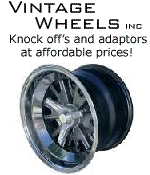
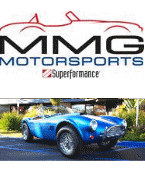

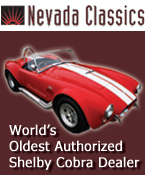


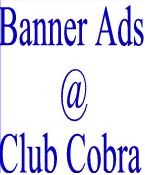


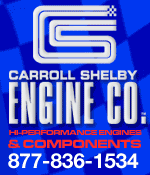








 Linear Mode
Linear Mode



